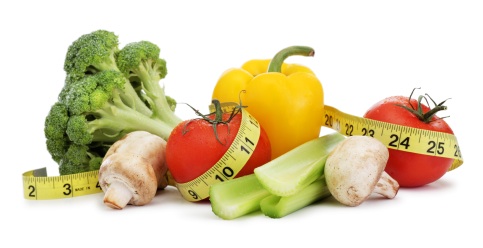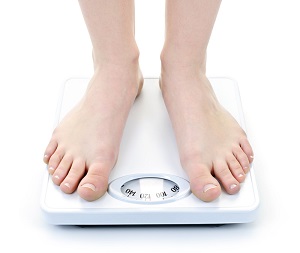No doubt you’ve heard via some form of media (news, Facebook, magazines) about the benefits of eating an anti-inflammatory diet. But what does that mean, really? What does an anti-inflammatory diet look like?
Just a couple of days ago, a great email from local chiropractor, Dr. Mindy Pelz, came through my inbox. I asked her permission to copy her email into my blog here so that you could learn from it. She lays it out in plain English exactly how to move your eating patterns to a more anti-inflammatory way of eating.
________
Here’s Dr. Mindy:
There is nothing better than living in a body that feels and functions the way you want it to.
You have more control over your health than you may realize. Chronic pain and disease can greatly be helped by eating the right foods.
The following are my top recommendations for lowering inflammation in your body. I highly recommend that you incorporate these foods into your diet everyday.
1. Wild Fish & Fish Oil – Specifically it is the EPA and DHA found in fish oil or from eating cold-water fish like salmon that has anti-inflammatory properties. The omega-3 fatty acid can help with joint swelling and inflammation generally caused by the over consumption of omega-6 fatty acids from non grass fed red meat. Be sure you always get your fish wild, as farm raised fish does not carry the same fatty acid content.
2. Fermented foods – Probiotics from either supplements or fermented foods help to build immunity and control infection caused by underlying inflammation in the body by supplying the body with good gut bacteria. Great fermented foods are unpasteurized sauerkraut, unpasteurized kimchi, raw kefir, or kombucha,
3. Juicing Greens – The process of juicing breaks the cell walls of fruit and vegetables, making the nutrients more accessible and allowing the body to quickly absorb mega doses of vitamins, minerals, and antioxidants, all of which can help combat inflammation. Green vegetables such as spinach, cucumber, parsley, and mint, are great to juice because they will put your body on the alkaline side and lower inflammation.
4. Cruciferous Vegetables – Broccoli, cauliflower, cabbage, and brussels sprouts are an excellent source of vitamins C and K, beta-carotene, and calcium, giving these vegetables great anti-inflammatory properties. They also contain high levels of glutathione, a necessary amino acid that pulls toxins from your body. Be sure to eat these veggies raw or lightly steamed, as it will retain the most nutrients.
5. Pineapple & Papaya – Along with being packed with vitamin C, pineapple also contains bromelain. Bromelain helps to break down proteins, aids in digestion, reduces swelling, and can even improve blood circulation.
6. Ginger – Used for centuries for medicinal purposes, ginger shares many properties with NSAIDs (non-steroidal anti-inflammatory drugs), suppressing pro-inflammatory molecules known as prostaglandins with little to no side effects compared to NSAIDs.
7. Turmeric – Over 5000 peer reviewed articles have been written about the health benefits of this miraculous tuber. Turmeric is the main spices added to curry, giving it its distinctive yellow pigment, turmeric contains curcumin. Curcumin blocks several inflammatory chemicals in the body. Like ginger it can prevent the production of prostaglandins and be used like NSAIDs with the added benefit of also being a great antioxidant.
8. Sweet Potato – This is one of my favorite foods ever. It may be sweet, but it’s lower on the glycemic index than white potatoes. Packed full of vitamins B6 and C, manganese, beta-carotene, and fiber, these amazing potatoes are a great addition to any diet. Working in concert, these nutrients are powerful antioxidants that help to heal inflammation in the body.
9. Coconut oil– This miraculous oil is packed with medium chain fatty acids. These fatty acids are digested quickly and can be a powerful source of energy. Coconut oil is also excellent way to keep your joints (especially knees & shoulders) well lubricated. Eating a diet high in coconut oil will also leave your skin hydrated and glowing.
10. Grass Fed Beef – Commercial raised, antibiotic packed, grain fed beef promotes inflammation (packed with omega 6 oils). You want to avoid grain fed beef at all cost. But organic grass fed beef is packed with omega 3 fatty acids and will lower inflammation in your body. Not only is grass fed beef a great source of protein and high in omega 3’s, it contains a good fat called conjugated linoleic acid (CLA) which is one of the most potent defenses against cancer.
________
You can learn more about Dr. Mindy Pelz at: www.familylifechiropractic.com
or
www.drmindypelz.com
Dr. Mindy is on a mission to help us change our health by educating us on how to eat better. Gotta love a doc who wants to help you stay off meds and be healthier! Thanks, Dr. Mindy!








 For breakfast, lunch or dinner, quinoa is a healthy option to add to your diet. Quinoa is a seed grain that has been cultivated in the Andean region for over 7,000 years and was considered sacred by the Inca Empire. It was later replaced almost completely by cereals such as barley, wheat and corn.
For breakfast, lunch or dinner, quinoa is a healthy option to add to your diet. Quinoa is a seed grain that has been cultivated in the Andean region for over 7,000 years and was considered sacred by the Inca Empire. It was later replaced almost completely by cereals such as barley, wheat and corn. The holiday season has come and gone. Many San Jose residents have “Shedding Holiday Weight” as a top priority on their to-do lists now. It’s time to work on losing those extra pounds gained from all the parties, holiday treats and family gatherings. With the abundance of rich foods at holiday time, it is no wonder that so many people suffer from holiday weight gain (yep, even your friendly
The holiday season has come and gone. Many San Jose residents have “Shedding Holiday Weight” as a top priority on their to-do lists now. It’s time to work on losing those extra pounds gained from all the parties, holiday treats and family gatherings. With the abundance of rich foods at holiday time, it is no wonder that so many people suffer from holiday weight gain (yep, even your friendly  For the last five weeks I’ve been encouraging my
For the last five weeks I’ve been encouraging my 
 Have you noticed that the dairy section has exploded with new choices? For years cows milk shared the refrigerated section with it’s lonely companion, soy milk. Now almond and coconut milk has burst onto the scene. If you’re dairy intolerant, this is definitely good news. Many new diets have touted its benefits. Several of my clients have made the switch with great
Have you noticed that the dairy section has exploded with new choices? For years cows milk shared the refrigerated section with it’s lonely companion, soy milk. Now almond and coconut milk has burst onto the scene. If you’re dairy intolerant, this is definitely good news. Many new diets have touted its benefits. Several of my clients have made the switch with great 